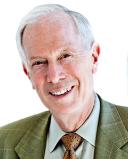Last week I opened the question of how psychiatric illnesses should best be classified. This is a very important question because the diagnosis determines the treatment, and people want to know if their problem has been correctly understood and if they’re being appropriately treated for it. There’s no doubt many patients are not being appropriately treated, which gives the subject of the deficiencies of DSM an intense practical interest.
Lots of people have railed against the current DSM. But nobody has really presented alternatives. I think history does give us some ideas, because over a century and a half of clinical psychiatry a lot of wisdom has been accumulated that, today, has been simply forgotten. What operating rules does that wisdom point us towards? Here are four.
1. We have to get the “neuropsychiatric” conditions into the nosology. The psychiatric complications of diseases such as epilepsy and Parkinsons are now in a no-man’s-land: the neurologists are uncomfortable with treating the psychiatric side of things, and the psychiatrists get no guidance from their official manual. Patients with epilepsy, for example, have psychiatric symptoms all over the place, and deserve better care than many of them are now receiving.
2. We have to cleanse the Augean stables of “anxiety.” There are currently nine different anxiety disorders in DSM-5, which, with the exception of panic disorder (that really does seem to be a disease of its own) are all pretty much of a muchness: They all respond to Prozac, have a low diagnostic “stability” from one year to the next, have nothing in the way of genetic specificity, and have prognoses that are all over the map.
The disease designers at DSM don’t seem to have got hold of the problem of dealing with “someone’s bright idea,” or diagnoses promoted on the basis of whim and diktat. The great German nosologist Emil Kraepelin did not recognize anxiety as a distinctive diagnosis because it was present in almost all diseases. Freud introduced anxiety to psychiatry, and even today, long after having thrown Freud overboard, we are still playing in the anxiety sandbox. The different forms of anxiety were once all lumped together in the category of “nerves” and we should go back to that.
3. Psychiatry has known for at least a century that there are at least two depressions: melancholia and nonmelancholia (the latter being part of the nervous picture). There are biological tests for melancholia, so we are on pretty firm scientific ground here. There is no such thing as “major depression,” and the whole thing needs urgently to be rethought.
Oh, is it really as urgent as that?
Yes, it is. Because patients with melancholic depression are at risk of killing themselves and they should not be on Prozac and its cousins. They should be receiving sturdy antimelancholic treatments, namely the tricyclic antidepressants (such as imipramine) or electroconvulsive therapy (ECT), which is the most powerful treatment psychiatry has on offer.
4. I saved the biggest change for last: We have to recognize that, for some specific part of the clinical population, depression and schizophrenia are the same disease, which is to say, each is a cluster of symptoms sprayed off by some mighty biological condition lurking deep in the brain. For some subgroups of patients, depression and schizophrenia may be different disorders, but another subgroup has both.
What happened was that in 1899 Kraepelin made a historic error: he erected a firewall between what he called dementia praecox (schizophrenia) and manic-depressive illness (all depressions plus mania, all put in the same pot, as a single disease, which, in my view, is correct).
So influential was the Kraepelinian synthesis that even today the firewall has been preserved. But guess what? Many patients who end up with the symptoms of schizophrenia (psychosis, flat affect, no will of their own [avolition]), started out depressed. And after the psychosis burns out, they’re depressed again. Maybe they were depressed along, but the flaring psychosis symptoms overpowered the underlying depression. Or maybe that depression wasn’t really “underlying,” but just a different facet of the real underlying disease that – because of these bulky traditions of seeing “depression” and “schizophrenia” as the basic diseases – has not been identified or named?
There are a few psychiatrists who’ve adopted the old German doctrine of “unitary psychosis” (Einheitspsychose) – seeing all psychotic illnesses as the same. But we’re talking here about including the serious mood disorders in that pot. It’s more than unitary psychosis. Actually, the past literature on the confluence of psychotic and depressive symptoms – sometimes consecutively, sometimes simultaneously – is enormous. But completely ignored today. “Postpsychotic depression,” a DSM-4 diagnosis, vanished in DSM-5.
I hope this isn’t too boring. These are very important issues, and almost never discussed in the media because most journalists do not understand them. But I see from previous comments that some pretty well-informed cookies follow this blog, and I look forward to hearing from you, actually, from everybody!




